For those of us dreaming of becoming full-time travel photographers, Elias Locardi’s story is perhaps one of the most practical and inspirational out there. His photography is fast becoming famous the world over, and his iconic style and love for teaching have made him one of the most followed social media photographers to date. Below is his super-practical introduction to travel photography, covering everything from what gear to pack and how to get it successfully on airlines, to how to make your shots unique, both in-camera and in post-production. It’s a must-see for anyone who’s ever dreamed of hitting it big with travel photography:
Perhaps one of the most important things for aspiring travel photographers to get from the beginning of Locardi’s presentation is that success didn’t happen overnight. He spent years building up his portfolio and developing his shooting and post-production style. He also spent a lot of time and energy building up his social media presence. In just a few years he managed to create an engaged social media following of nearly 2.5 million people across Facebook, Google+, Twitter, and Instagram. Now that takes a LOT of work, commitment, and a love of writing, teaching, and sharing. It was also part of the key to his success. Even today, most of Locardi’s paid work is not from shooting photos, but rather from educating folks about the places and tools and tricks of the trade.
Another key piece is that of building relationships:
“I’ve been working adamantly over the last five years to build sustainable business and through that time I’ve built relationships with people that have given me the ability to do some really, really fun stuff in photography.”
But regardless of whether you’ve made a name for yourself yet or are still dreaming about it, one of the first practical things you’ll need to think about when traveling is what gear to bring with you. Aside from needing to be able to fit it on whatever you’re traveling on or in, it also needs to be durable and reliable.
“One of the hardest things to do when traveling from country to country – sometimes a week at a time – is replace something when it’s broken.”
It also needs to be well-protected. Locardi’s favorite bags come from Think Tank and basically carry everything the Locardis own (as they put it, they’re “location independent”—they have no home-base). When he began traveling, he started out with a lot more tools than he’s ended up with today:
The next thing to consider is what and where to shoot. Many photographers shy away from shooting the iconic places everyone goes to, but Locardi thrives on the challenge of going to a famous landmark and making his own, unique shot from it.
“Every season, every time of day is different. You can always find your own voice. Your photos will look different than what others have done, and they should.”
If you go to beautiful, inspirational places that you can’t help but fall in love with, and then spend time experiencing that place, you’ll find that you have a deeper understanding of that place. From there you just need to figure out how to transmit that unique understanding of yours into a photo.
Tips for Getting Amazing Travel Photos
Shoot during the sunrise/sunset, twilight, and golden hours.
You probably already know about the magic of shooting during these times, but Locardi really drives the point home. While the rest of the day (or night!) is spent in scouting, setting up, etc., those few magical hours of light are set aside for shooting. Period. Even if it means you don’t get any sleep for a few days.
Use weather events and cosmic elements to make your shots truly unique.
If you’re wondering how to capture a place that millions have shot before you, try waiting for unique weather events/elements like ground fog, the end of a storm etc. These can transform an ordinary photo of a beautiful place into a one-of-a-kind fantastic image that everyone is clamoring to see.
If you’re willing to tackle the learning curve, it might also be worth your while to learn a bit about astrophotography. More than setting you apart from the average photographer at an iconic place, adding elements of astrophotography into your images can really create some stunning results:
But it takes time, hard work and luck. The above image “was the culmination of a few years of effort in developing my style, developing a target, and then going there and getting extremely lucky over the course of four days.”
Blending moments in time can create a single “perfect” memory.
One of the keys to Locardi’s almost mystical imagery is that he’s not only blending different exposures together, he’s blending different moments in time. He does this by taking a number of images over a long time span—say from the golden hour to the blue hour—and then putting them into different layers in Photoshop and revealing the parts that he wants with the paint brush tool and a Wacom Tablet. The end effect allows for the capture of all the best lighting from all the best time periods. It also allows one to add in the city lights to a sunset scene. Since all of this is done without cutting and pasting, there aren’t any edge effects or halos. It’s seamless.

Blending time elements at the Louvre, Paris.
Blending moments of time also allows you to control some of the variable inherent in shooting iconic locations where there are a lot of people (i.e., it’s easier to remove them because you have a number of different shots from the exact same location).
Add the “pop” at the end, after you’ve done you’re blending.
For Locardi, blending is not post-processing—it’s just “putting things back together.” The post processing is where he adds contrast and makes the colors “pop.” For this he uses the Nik Filter Suite, particularly Color Effects Pro.
For some, Locardi’s post-processing style seems a bit over the top, but what can’t be denied is that his photos have won acclaim across the travel photography world and earned him a strong following. They’ve also allowed him to live his dream of being a full time travel photographer and teacher.
Like This Article?
Don't Miss The Next One!
Join over 100,000 photographers of all experience levels who receive our free photography tips and articles to stay current:







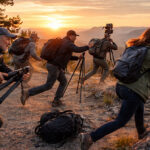
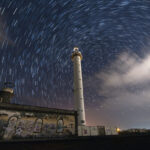
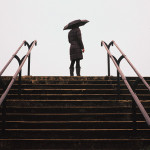
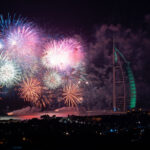
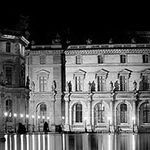
Leave a Reply